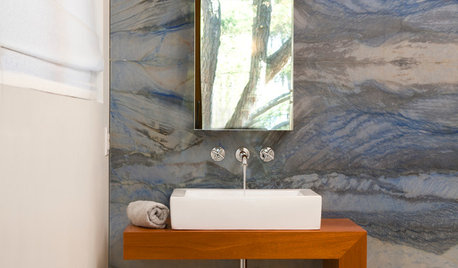Over watering or under watering?
zeeth
14 years ago
Related Stories

GARDENING GUIDESGreat Design Plant: Anemone Canadensis Adds Pizzazz to Water’s Edges
Plant Canadian anemone along pond, lake or stream edges for a splash of white flowers in late spring
Full Story
LANDSCAPE DESIGNHow to Move Water Through Your Landscape
Swales, underground pipes or a mix of both: There’s more than one way to distribute water in the garden
Full Story
PATIO OF THE WEEKWater and Fire Mingle in a Canadian Front Yard
If the illuminated moat winding through this Ontario patio doesn't dazzle you, the 8-foot-wide fireplace will
Full Story
HOUSEKEEPINGProtect Your House From Winter Water Damage
Avoid costly repairs by learning to spot potential problem areas before water damage is done
Full Story
BATHROOM DESIGNRoom of the Day: Wings, Wind and Water Inspire a Bathroom
Birds soar through the shower of this bathroom for a girl, while gorgeous blue stone keeps it grounded
Full Story
HOUZZ TOURSHouzz Tour: Battling the Tides Results in a Wondrous House on the Water
A complex construction effort pays off big-time with unobstructed views of Blue Hill Bay in Maine
Full Story
DISASTER PREP & RECOVERYRemodeling After Water Damage: Tips From a Homeowner Who Did It
Learn the crucial steps and coping mechanisms that can help when flooding strikes your home
Full Story
DISASTER PREP & RECOVERY7 Initial Steps for Dealing With Floodwater Damage
How you handle your flooded home and its contents can affect not only the damage level but also your personal safety
Full Story
SAVING WATER11 Ways to Save Water at Home
Whether you live in a drought-stricken area or just want to help preserve a precious resource, here are things you can do to use less water
Full Story
LANDSCAPE DESIGNGet Along With Less Lawn — Ideas to Save Water and Effort
Ditch the mower and lower your water bill while creating a feast for the eyes with diverse plantings and gathering places
Full Story







mehitabel
claire1_2008
Related Professionals
Surprise Landscape Contractors · Forest Hills Landscape Contractors · Roseville Landscape Contractors · Twin Falls Landscape Contractors · Palos Hills Landscape Contractors · Erie General Contractors · Galveston General Contractors · Leavenworth General Contractors · Lighthouse Point General Contractors · Merritt Island General Contractors · Milton General Contractors · Nampa General Contractors · Rowland Heights General Contractors · San Elizario General Contractors · Wallington General Contractorswhitecat8
jerry_meola
sweetcicely
mehitabel
mrbreeze
howard_a